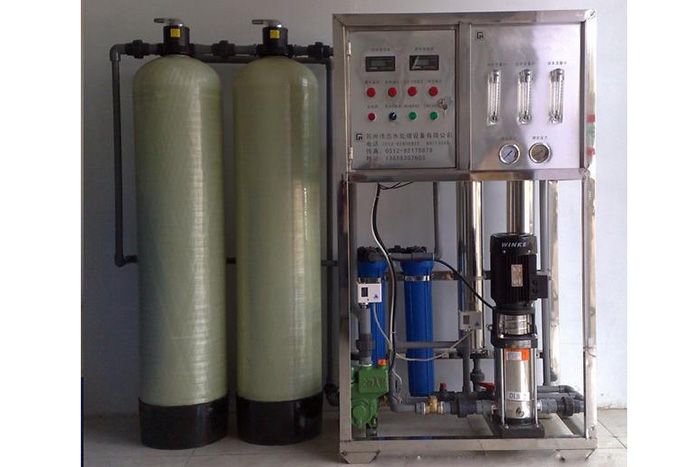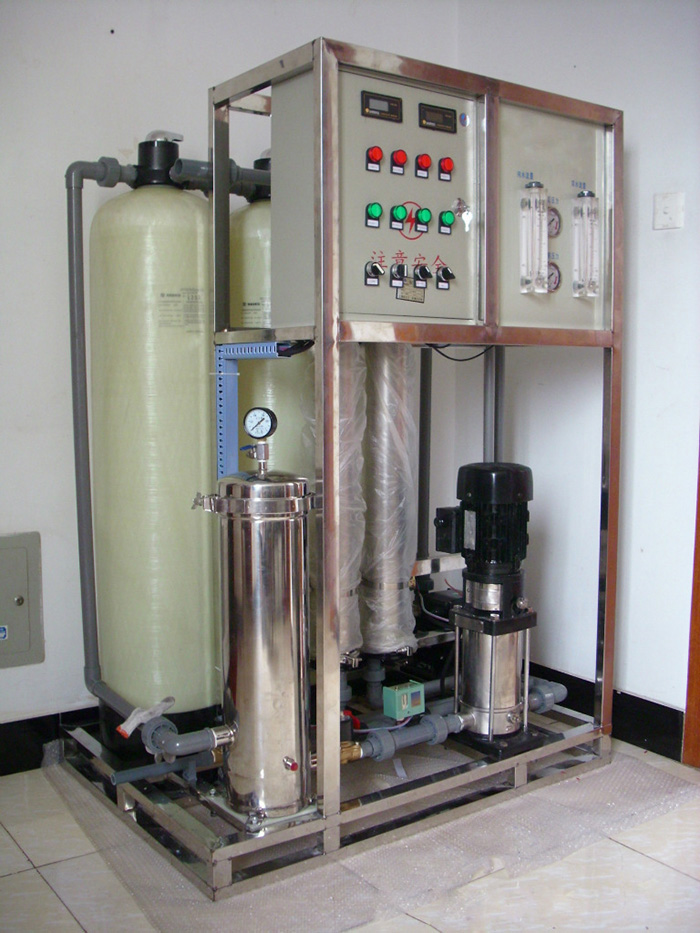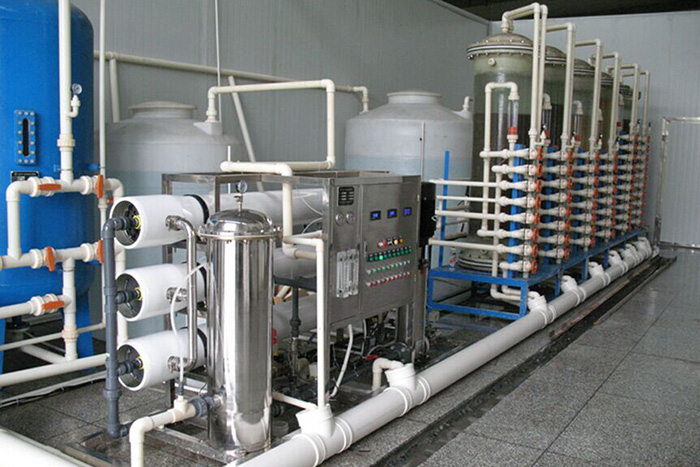Water treatment Equipment > Zl-dc001 battery industry ultrapure water equipment

Battery industry ultrapure water equipment
Equipment parameters:
Name: battery industry ultrapure water equipment
Model: zl-dc001
Operating pressure: 0.3 0.6 (Mpa)
Water: 0.25 100 t/H
Dimension: 150-1500 (cm)
Voltage: 380 (V)
Water quality: 0.1 US
Power: 1000 (w)
Electrical conductivity: less than 10 us
The desalination rate: 99.5 (%)
Single output: 0.25-100 (/ h)
Inlet diameter: 50 (mm)
Summary:
Battery industry with ultrapure water including battery production with pure water, lithium battery production with pure water, the solar cell production with pure water, battery case board with pure water.Equipped with battery electrolytes is very strict with pure water, usually require water conductivity at 0.1 us/cm (resistance above 10 megohm), the traditional preparation of battery with ultrapure water is used to process is often used resin exchange equipment of Yin and Yang, the process of the downside resin regularly regeneration after using for a period of time.As membrane separation technology matures, now often use reverse osmosis filtration technology, or it is behind the level of reverse osmosis again after ion exchange mixed bed (or electric ion EDI) process for producing ultrapure water.

battery industry ultrapure water equipment
Battery categories:
1.Battery: also called a battery, refers to the charge after the battery discharge cannot use simple method make active material recovery and continue to use the battery, such as zinc - manganese dioxide dry cell zinc - MnO2, lithium manganese batteries, zinc air battery, zinc silver battery at a time.
2.Battery: also called secondary battery, is refers to the battery can be made by the method of charging after discharge active material recovery and continue to use the battery, which can reach dozens to thousands of times to charge and discharge cycle: for example: nickel cadmium battery (Ni - Cd), nickel metal hydride batteries (Ni - MH), lead-acid battery (Pb - - H2SO4)
3.Fuel cells: also called continuous battery, refers to the active substances in reaction from external continuous input battery, power battery will continuously work, such as oxygen, hydrogen fuel cell, phosphate, fuel cells, etc.
4.Reserve battery: refers to the anode and electrolyte during storage battery is not directly contact, injection electro-hydraulic before use or using other methods to make the electro-hydraulic contact with is negative, then to discharge the battery into the state, I call this process "activated", so it is also called activate cells, such as magnesium battery, heat, etc.
5.According to the electrolyte points: acid batteries, alkaline batteries, neutral batteries, organic inorganic electrolyte battery, solid electrolyte battery, nonaqueous electrolyte battery
6.According to the characteristics of battery points: high capacity battery, sealed battery, power battery, maintenance free batteries, explosion-proof, etc
7.According to the anode materials are: zinc manganese battery, nickel cadmium, nickel metal hydride, lead-acid series, the series of lithium battery, etc.
Water batteries commonly used four methods:
Although distilled water: the equipment is cheap, but volatile impurities can't remove, may also ion and container shape substances can cause secondary pollution to precipitation.
Deionized water, is to use a traditional for a longer time to pure technological process.But also easy to cause after deionized water storage bacteria breeding.
Against water penetration: against water penetration overcome the many shortcomings of distilled water and deionized water, using reverse osmosis technology can effectively remove most of the impurities such as organic matter.
Ultrapure water: the standard is water resistivity was 18.2 M omega - cm.Producing ultrapure water reverse osmosis and ion exchange process often USES mixed bed or reverse osmosis, electric ion to preparing (EDI), while the latter is relatively more economic and environmental protection.

battery industry ultrapure water equipment
Technological process:
1.Using ion exchange way, the process is as follows:
Raw water, raw water pump to many medium filter, activated carbon filter, water softener to the precision filter, Yang resin filter bed to Yin resin filter bed, mixed bed resin of Yin and Yang - microporous filter - water points
2.Using two-stage reverse osmosis, the process is as follows:
Raw water, raw water pump to many medium filter, activated carbon filter, water softener to the precision filter, the first-level reverse osmosis - > PH adjustment to the middle water tank, the second ro (reverse osmosis membrane surface is positively charged) to purified water, pure water pump - microporous filter - water points
3.Using EDI way, the process is as follows:
Raw water, raw water pump to many medium filter, activated carbon filter, water softener, the precision filter - level 1 reverse osmosis machine - the middle water tank - intermediate water pump - EDI system - microporous filter - water point (content from:http://www.gz-qfw.com)
Process:
At present the craft of preparation of the chemical industry with ultrapure water is basically the above three, the rest of the process are mostly on the basis of the above three basic process for different combination collocation is derived.Now will have their advantages and disadvantages are listed in the following:
At the beginning of the first advantage is that by using the ion exchange resin less investment, occupy less place, but the downside is that need regular ion regeneration, spend a large amount of acid and alkali, and have certain destructive to the environment.
The second using two-stage reverse osmosis equipment, its characteristic for early times higher than using ion exchange resin method, but without the resin regeneration.Its drawback is that related to the original film need to clean or replace regularly, water quality is not high, relatively most can only do 1 us/cm, so in quality not demand a higher level of reverse osmosis is often used when the back again with mixed bed (double bed), Yin and Yang.
Third using reverse osmosis as pretreatment with electricity to ion (EDI) device, which is currently producing ultrapure water is the most economic, most the preparation process of environmental protection, do not need to use can continuous producing ultrapure water, acid and alkali for regeneration is destructive to the environment.The drawback is that initial investment relative to the above two ways are too expensive.
National standards:
Electrolyte consists of sulfuric acid and treated with reverse osmosis equipment configuration of ultrapure water, must conform to the state standard GB4554-84 battery special sulfuric acid, and meets the requirements of pure water mixture density of 1.22 (+ 0.01 g/cm3 20 oc) of the electrolyte.
Related products